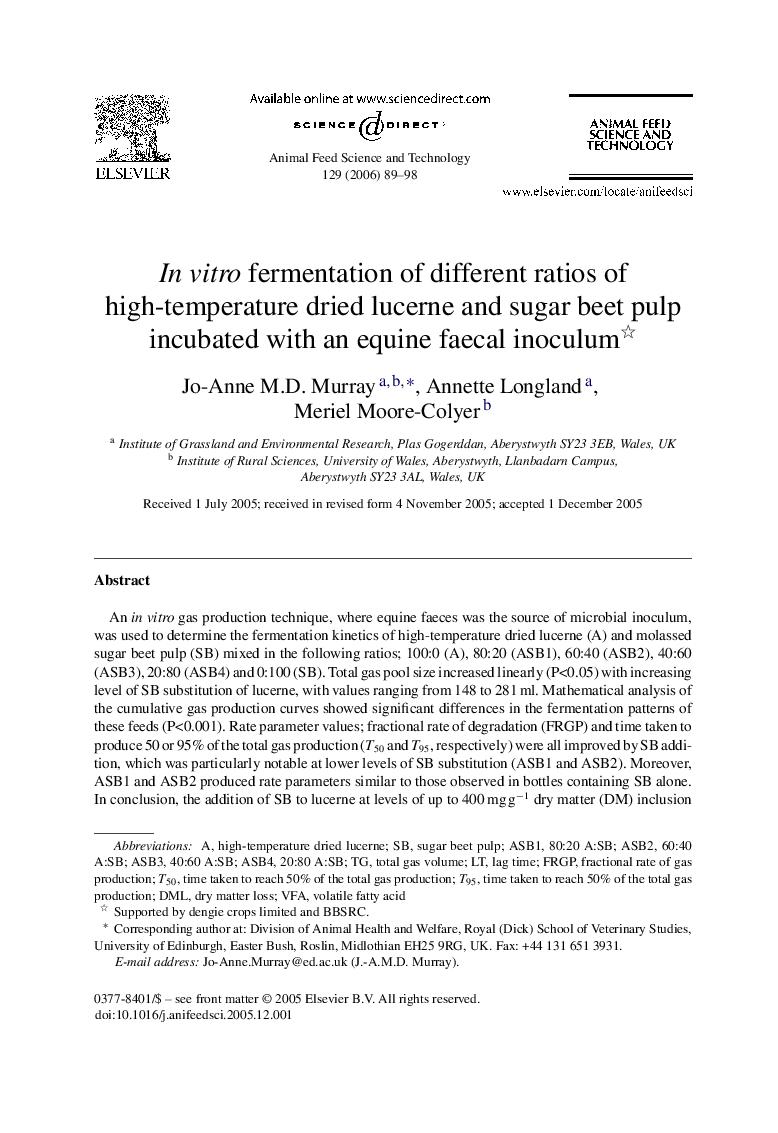| Article ID | Journal | Published Year | Pages | File Type |
|---|---|---|---|---|
| 2421129 | Animal Feed Science and Technology | 2006 | 10 Pages |
An in vitro gas production technique, where equine faeces was the source of microbial inoculum, was used to determine the fermentation kinetics of high-temperature dried lucerne (A) and molassed sugar beet pulp (SB) mixed in the following ratios; 100:0 (A), 80:20 (ASB1), 60:40 (ASB2), 40:60 (ASB3), 20:80 (ASB4) and 0:100 (SB). Total gas pool size increased linearly (P<0.05) with increasing level of SB substitution of lucerne, with values ranging from 148 to 281 ml. Mathematical analysis of the cumulative gas production curves showed significant differences in the fermentation patterns of these feeds (P<0.001). Rate parameter values; fractional rate of degradation (FRGP) and time taken to produce 50 or 95% of the total gas production (T50 and T95, respectively) were all improved by SB addition, which was particularly notable at lower levels of SB substitution (ASB1 and ASB2). Moreover, ASB1 and ASB2 produced rate parameters similar to those observed in bottles containing SB alone. In conclusion, the addition of SB to lucerne at levels of up to 400 mg g−1 dry matter (DM) inclusion appears to significantly increase the rate at which Lucerne is degraded, which has important implications for the overall energy balance in the horse. Furthermore, the gas production technique appears to be a valuable tool for evaluating fibrous feedstuffs and feedstuff combinations, such as lucerne and SB, for equids in vitro, allowing the kinetics of degradation to be studied as opposed to end-point data.
